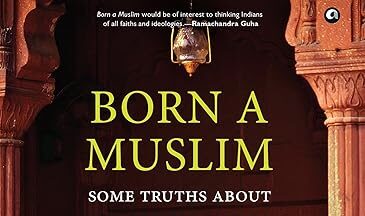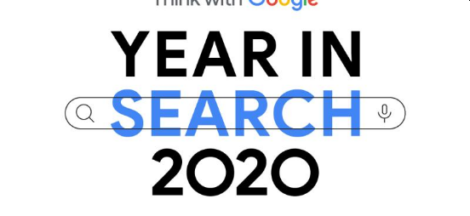This post was written for Escape Velocity Blog and first appeared there.
Retargeting is a crucial weapon in the e-commerce arsenal and is increasingly being deployed in the online world as more and more brand transactions move online. Retargeted ads are also getting increasingly sophisticated; from being simple banners that follow you everywhere (only online, thankfully), they now are morphing into banners tailored and hyper-targeted specifically at you basis your own online and offline signals. Sample the following ads…
- You browsed the website of an outdoor gear and clothing company a few months ago. Now, when it rains in your locality, you notice ads for a newly launched rainwear range.
- You streamed a few episodes of a series on an OTT app. Now, you notice ads for new episodes from that series detailing latest plot twists and developments.
- You are in the neighborhood of a mosque and notice ads for specific Ramzan combos from a Quick Service Restaurant along with a countdown to the time to break the fast for that day.
Some of the above are exaggerated of course. But, ‘Data-driven creatives’, as such ads are called, abound in the online space. Such ads are created by combining and analysing first party data (CRM databases, POS systems, website analytics etc.), with third party data (time, temperature, weather etc.), with contextual real-time user information (device type and id, geo-location etc.) to dynamically create ads to meet specific customer needs at a particular moment.
Data has long been used for programmatic buying and audience targeting or retargeting, and today it is increasingly being used to make real-time creatives. Thousands of ads are programmatically created by populating set templates with data from spreadsheets (text, items, fonts, colours, URLs etc.), images/videos, voice overs and real-time data. Such strategies are here to stay as they often lower acquisition costs or increase clicks or even save on marketing and creative resource time. The data in this case is used to relentlessly personalise ads to chase efficiencies.
However, such communication often lacks a strong creative idea and simply shows a product offering (refer the three examples above), thus wasting the opportunity to showcase the brand’s core promise or benefit and build for the long-term. Hence, the question in the title of this post – are data and creative contradictory? Can they co-exist? Are there any examples of the same?
We are seeing some great examples of how big data is transforming how ads are created and developed, or how a story is enhanced in real-time in mass media today.
The British Airways (BA) ‘Magic of flying’ campaign is probably the most well-known example of using a data-driven creative in mass media. Real-time flight location, destination and current weather data were used to trigger the creative and copy on digital billboards thereby raising the awareness of the breadth of destinations and flight frequency of BA. The creative idea – “the magical feeling of watching a plane flying overhead” – was wonderfully brought to life when the kid got up, pointed to the BA plane that flew directly overhead and chased it across the billboard.
Not just B2C businesses, B2B businesses have benefited from data-driven creative campaigns too, on mass media even. That “deep data analysis can reveal unexpected insights” is no secret and IBM has been demonstrating it well at Wimbledon since 2017 with Pundit Watson. Watson, IBM’s AI offering, crunched 22 years of structured and unstructured match and commentary data to uncover player traits and behaviors which fed into real time match coverage. Taking IBM head on, Google pushed the envelope on data-driven creatives with its ‘Know what your data knows’ campaign. Statistics of the current basketball game with big data from decades of previous league games were used to predict what’s going to happen next in the game. Basis this prediction, six different custom ads were created, rendered real time and then pushed onto live television broadcast. Both campaigns demonstrated the querying, learning and computing capabilities of their cloud based AI platforms to various businesses.
These celebrated examples of data-driven creatives are the ones where the creative was built around a simple insight, and data leveraged to add unexpected details and drive the communication strategy while delighting the viewer. In other words, the data powers the creative idea. As ad agencies invest in building (or buying) internal data capabilities, we hope to see examples of the latter kind where data will be used to better define the problem, support the insight or amplify the benefit.
These are still early days of combining creative ideas with the wealth of data available to drive a brand’s message. Many agencies have still to improve their data understanding capabilities to match their creative prowess. At the heart of delivering a good data-driven creative is the alignment between the marketing, analytics, creative and media teams right from the planning stage itself; some of the key questions that they need to consider – What business or brand problem needs to be solved by the campaign? What’s the creative idea? What’s the best way to leverage this data to support the creative idea? Which are the right data signals to use or apply for this campaign?
The access to powerful machine learning systems, the pervasiveness of voice assistants and personal devices is going to add more dimensions to how data can be used to deliver creative messages and vice versa. Imagine a day when the unstructured data you leave behind – be it social media messages, voice or search queries or use of IOT devices – is not just taken as a signal of intent, but analysed to derive a unique insight about your need and then used to deliver a 30 second ad tweaked to match this insight. I am pretty excited about what the future holds (though some of my colleagues are spooked by it)!






